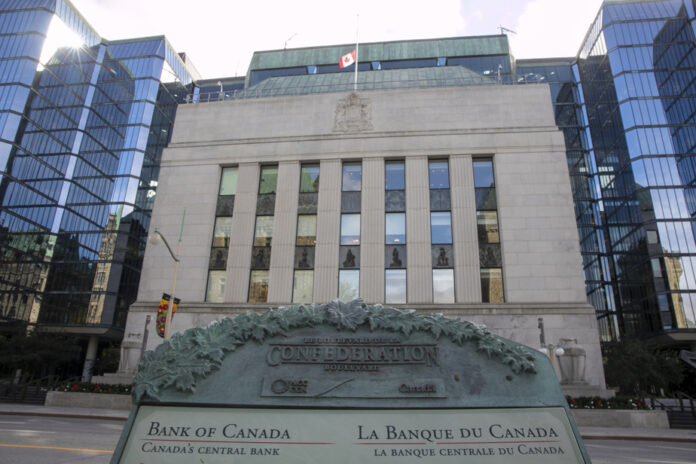After 10 key rate hikes in 18 months, the Bank of Canada will pause its fight against inflation on Wednesday and leave the rate unchanged at 5%. At least that is the majority opinion among economists interested in monetary policy.
The likely pause, the second since interest rate hikes began in the spring of 2022, comes as pressure mounts on the Bank of Canada to halt hikes that are increasingly hurting Canadian households.
British Columbia Premier David Eby and Ontario Premier Doug Ford wrote specifically to the Governor of the Bank of Canada calling for an end to interest rate hikes.
In Quebec, Premier François Legault judges that it is better to let the Bank of Canada do its job. “I don’t think it’s a good idea to go and suggest, to go and put both hands in the decisions of the Bank of Canada,” he said when asked about it at Granby, during the announcement of an investment. We can help citizens, we have to help citizens, we have helped citizens, we will continue to help citizens, but I don’t think it’s a good idea to go and start intervening at the Bank of Canada.” .
An exit from the provincial premiers was not necessary to convince the Bank of Canada to take a break, believes Jimmy Jean, chief economist at Desjardins. “The data is compelling enough,” he said, pointing to the 0.2% drop in gross domestic product (GDP) in the second quarter.
This decline surprised everyone, including the Bank of Canada itself, which had forecast GDP growth of 1.5% rather than a decline of 0.2%.
In addition, Statistics Canada revised growth in the first quarter of the year down from 3.5% to 2.6%. The Bank of Canada had relied in part on strong apparent growth in the first quarter to resume rate hikes in June and July, after an initial pause.
The GDP data released last week comes on top of other signs of weakness in the Canadian economy, such as falling consumer spending and a rising unemployment rate.
The most recent employment portrait, that of August, will be known on Friday and will therefore arrive too late to influence the Bank of Canada’s decision on Wednesday. But economists expect job creation to continue to slow and the unemployment rate to rise slightly, from 5.5% to 5.6%. This would be the fourth consecutive increase in the unemployment rate.
Royal Bank economist Nathan Janzen points to other signs of a slowing labor market: the frequency of job changes is falling and the number of job vacancies was down in June to its lowest level in two years. .
On the inflation front, progress is notable, but unsatisfactory for the Bank of Canada.
Price inflation accelerated in July, to 3.3%, after a 2.8% increase in June. The figures for August will be known on September 19. The consumer price index had exceeded 8% in June 2022.
The expected pause in increases in the Bank of Canada’s key rate does not mean the end of the increases, however, nor that the rate is on the verge of falling again.
“The central bank is unlikely to rule out the possibility of further rate hikes this year, National Bank economists Kyle Dahms and Jocelyn Paquet say, but it may have enough signs of a slowdown in recent months to to be able to allow ourselves a little patience”.
Bank of Canada Governor Tiff Macklem is due to deliver a speech on Thursday, the day after the rate decision, where he could explain the monetary authorities’ vision for what’s next.
According to economist and senator Diane Bellemare, the Bank of Canada lacks transparency in the conduct of its policy. The central bank has begun publishing discussions of the deliberations that precede its interest rate decisions. She also appointed an independent and non-executive deputy governor, Nicolas Vincent, to have an external opinion on monetary policy, but that remains insufficient, according to Diane Bellemare.
In a letter published by Le Devoir, the economist deplores that the Bank of Canada makes its decisions in a vacuum, without justifying them to Canadians. “It does not present the economic or financial costs of this strategy for individuals, companies and governments, nor the redistributive effects, the effects on investments, productivity, nor the specific indicators on which the decisions are based. A constant evaluation of the costs and benefits of the strategy is called for,” she writes.

